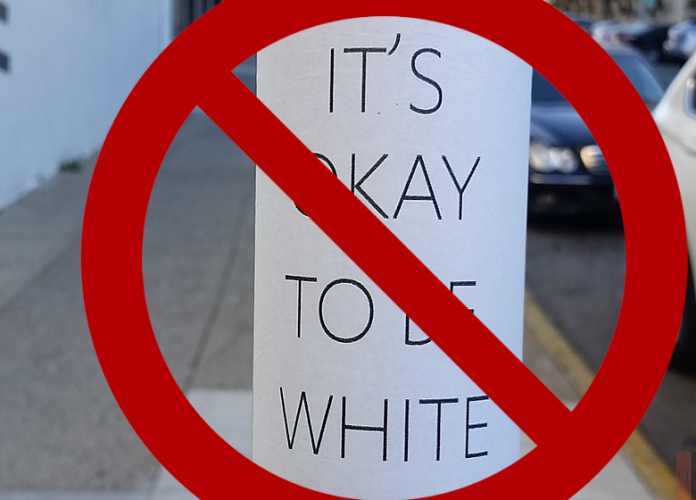Recently, I read a blog post on IMISCOE (International Migration Research Network) while researching ways to maximize immigration and diversity across the European and North American continents. What I read in that post was alarming. The blog post, originally written in May 2021 by Lisa-Marie Kraus, makes a shocking and objectively wrong claim it its title (CW: wh*te supremacy):
“Diversity” includes White people, too
For those easily triggered, please take a moment now to exercise some much-needed self-care. You can always come back to this article later. Don’t worry. Remember that you are valid and it is my ethical responsibility as a Journalist to care about your mental well-being. If you are having a crisis after reading that, the Suicide & Crisis Lifeline can be reached here.
For those able to continue, read on.
There is a lot to unpack in this blog post, beginning with the title. You may notice how the title subtly invokes white supremacy by capitalizing the word “white”. You will be unsurprised to know that Kraus goes out of her way to capitalize “white” throughout the rest of the blog post. The perceptive ones among you will note that this is an egregious violation of established AP-style guidelines, and I assure you that as long as I live I will never, NEVER capitalize “white” in my capacity as a Journalist or a human being.
The article was written by a person named Lisa-Marie Kraus, a self-proclaimed sociologist who claims her fields of expertise to be in socio-cultural consequences of migration on both sending and receiving countries. How IMISCOE hired a person of these credentials who somehow ended up writing such an irresponsible blog post defies comprehension. Is this evidence that post-graduate Critical Theory scholarship and academia are being infiltrated by far-right agitators?
Kraus goes on in the article to make several points, which I will quote, censor, and rebut one-by-one. I have taken the liberty of minimizing real-world harm by editing her egregiously improper capitalization of “white” when referring to the race.
Recently, I read a report on the effects of Covid-19 on the workplace. One of the main finding was that “diverse employees” struggle the most during the Covid-19 period. I thought to myself – “diverse employees”? What does that mean? If there are “diverse” people, that implies that there must also be nondiverse people. Looking further into the report, scrolling down, you will find that “diverse” is defined as “[e]mployees who identify as women, LGBTQ+, or a person of color (POC).” That in turn infers that “nondiverse” people are straight white men.
Kraus is correct in that there are Diverse people and nondiverse people. However, she errs when she goes on to assert that there are problems with this classification.
Firstly, a person in themselves cannot be diverse. Diversity cannot describe a bounded individual, but it is rather a description of a collective or group condition in which individuals have features that set them apart from each other. Yet, I encounter the idea that diversity is a characteristic of a person a lot in daily life. Then I wonder, how can, for example, a woman be diverse in a vacuum, as a single person? Let’s imagine a two-member group: a woman and a man. For this example, gender is the distinguishing factor. In that sense, this group is diverse (in the most minimalist sense possible). The example illustrates how one person cannot be the bearer of diversity without a counterpart; the woman cannot be a diverse person by herself. Then, following the report’s definition, how is the woman the “diverse person” and not the man? Together, they make the diverse group - and the man is part of the diverse group just as much as the woman.
Kraus is wrong. A Woman can be diverse by herself, and usually is. The status of being a Woman is defined by the collective oppression against Women committed by the patriarchy. It is one of the most common qualifiers of intersectionality. Not only that, but a Woman by herself who has many intersectional qualities, such as a Woman of Color, is in fact what one would refer to in common parlance as a Very Diverse Woman, as she embodies 2 major intersectional identities as one person.

The example of adding a white man to a group to make it more diverse is absurd. A white man automatically makes any group less diverse, more privileged, and less intersectional. Any self-respecting intersectionality expert will tell you this. Kraus would do well to remember that in her future writings.
Excluding straight white men from “diversity” by referring to them as “nondiverse” is a counterproductive practice in the grander efforts made to establish equality. This exclusion perpetuates processes of Othering and labeling straight white men as “nondiverse” enhances their self-image as being outside the diverse society. It alienates this group from the topic and makes them believe that they do not have any role in issues of diversity. In this way, it promotes white masculine heteronormative structures in which straight white men are perceived to be the norm, the superior standard, that everyone else deviates from (Zerubavel, 2018). As such, it clears white men of their responsibility and engagement in diversity issues as it makes them believe that they do not have any role or responsibility in the issue.
Kraus asserts that white men are being “othered” or otherwise “labeled” [sic] as “nondiverse”, which is not factual. She is the only person I have ever seen explicitly refer to white men as “nondiverse” as she does at the start of this paragraph. Nobody is actively excluding or alienating white men from diversity – white men are willingly excluding themselves by actively resisting the Intersectional march against the historical oppression of white supremacy, patriarchy, and toxic masculinity.
Kraus also forgets that the objective of Diversity is not to establish equality but to establish equity. Equity necessarily requires the dispossession of power from oppressors (white men) and their subsequent subjugation into a new social order ruled by the formerly oppressed. It is true that white men have a responsibility to engage in diversity issues. Indeed, white men have the most responsibility in the sense that they owe the handover of the most power, wealth, and status to the people they once subjugated. But Kraus misunderstands that white men are rejecting that call to responsibility of their own accord, and at their own peril. They are not being excluded from the conversation, but rather grabbing the microphone at the expense of everyone else at every opportunity. Perhaps if Kraus had paid better attention in her gender and critical racial studies classes in her undergrad, she would understand this.
And indeed, being part of diversity is not how white people in general perceive diversity. Research into diversity and inclusion shows that white people do not consider themselves as part of diversity and tend to associate the topic rather with exclusion than inclusion (Plaut, Garnett, Buffardi, & Sanchez-Burks, 2011). Due to this, efforts at promoting diversity and inclusion are sometimes met with negative reactions by whites. This leads to the problem that companies with missions of diversity and inclusion often lack the indispensable support among white people (Thomas, 2008).
The support of white people in diversity and inclusion efforts is indeed indispensable. Why, then, is Kraus so convinced that it is the fault of something or someone other than white people that white people perceive such efforts negatively? What else is there to look for? Robin DiAngelo spelled it out years ago when she published White Fragility. The problem lies with white people themselves – not with Diverse People, not with the promoters of DEI, but with white people incorrectly assessing Diversity negatively. We should be on the attack against white bias and white fragility, not coming to its defense.
By using “diverse people” as code to describe minorities, white people’s feeling of not belonging in environments that foster diversity is reinforced. Diversity is then, again, perceived not as a concern of white people but as a problem of the Other. Calling straight white men “nondiverse” vis-à-vis “diverse” people does not contribute positively in laying the groundwork for an equal society. Terminology matters and we have to consider what the words we use imply when we describe social realities. As long as the “diverse/nondiverse” dichotomy is used, the harmful idea that there are people who are the standard and others who deviate from it prevails.
In her conclusion, Kraus repeats several of her prior mistakes – capitalizing “white” (a well-known white supremacist dogwhistle), coming to the defense of white people who perceive diversity with a negative bias, conjuring a new “nondiverse” term that doesn’t exist and nobody uses, and mistakenly treating the objective of diversity as “equality” when it is in fact Equity. She even has the audacity to remind us that “terminology matters”.
Indeed, Miss Kraus, terminology matters. When will you start using it correctly?














